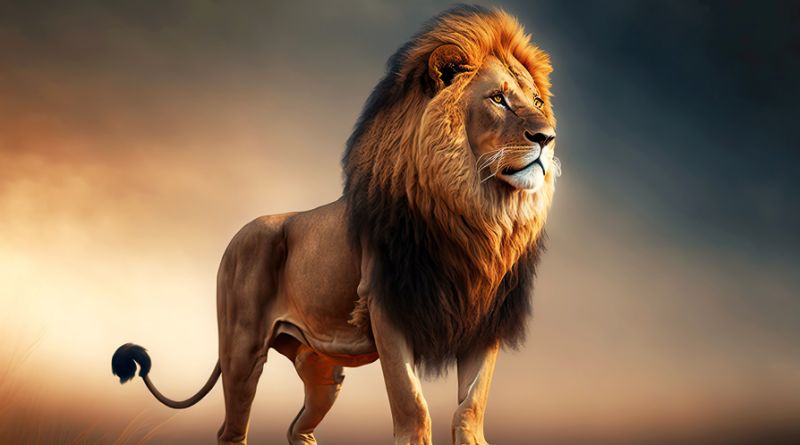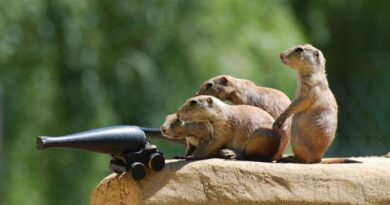Embark on a wild journey through the untamed realms of the animal kingdom as we unveil the Top 8 Deadliest Cats. These majestic predators, with lethal prowess and captivating beauty, command our respect and fascination. From the stealthy jaguar to the agile cheetah, each feline on this list boasts a unique set of skills that solidify their status as nature’s ultimate hunters.
Join us as we explore their hunting techniques, habitats, and the delicate balance they maintain in the ecosystems they inhabit. Whether you’re a wildlife enthusiast or just curious about the world’s most formidable felines, this comprehensive guide will satiate your curiosity and leave you in awe of the lethal grace possessed by these magnificent creatures.
8 Deadliest Cats
Jaguar (Panthera onca)
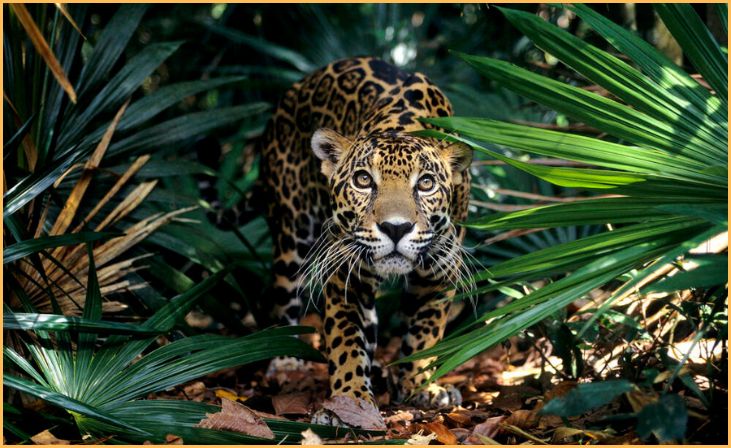
The jaguar, native to the Americas, holds the crown as the most formidable cat on our list. Renowned for its exceptionally powerful bite, the jaguar possesses the strongest jaw muscles among big cats. Its distinctive coat, adorned with rosettes, aids in stealthy hunting through dense jungles and forests. Preferring a diverse range of habitats, from rainforests to grasslands, these solitary hunters are capable swimmers, often surprising their prey by ambushing from the water’s edge. With a preference for large prey, the jaguar plays a crucial role in regulating the populations of herbivores, contributing to the overall health of its ecosystem.
Also Read: Maine Coon Mix Characteristics
Lion (Panthera leo)
As the only social big cat, lions are known for their majestic manes and impressive group living structures known as prides. Occupying the African savannas, lions are adept hunters, relying on coordinated teamwork during hunts. With their powerful build and sharp claws, lions typically target larger mammals such as wildebeests and zebras. The roar of a lion can be heard over long distances, serving as a territorial proclamation. Despite their regal appearance, lions face threats such as habitat loss and human-wildlife conflict, emphasizing the need for conservation efforts to secure their survival.
Leopard (Panthera pardus)
The leopard’s adaptability and widespread distribution across Africa and Asia make it a truly versatile predator. Recognizable by its distinctive spotted coat, leopards are exceptional climbers and often hoist their kills into trees to protect them from scavengers. Their stealth and strength enable them to hunt a variety of prey, ranging from small mammals to larger ungulates. Highly adaptable to diverse habitats, leopards can thrive in both dense forests and open savannas. Facing threats such as poaching and habitat fragmentation, conservation measures are essential to ensure the continued existence of these elusive big cats.
Snow Leopard (Panthera uncia)
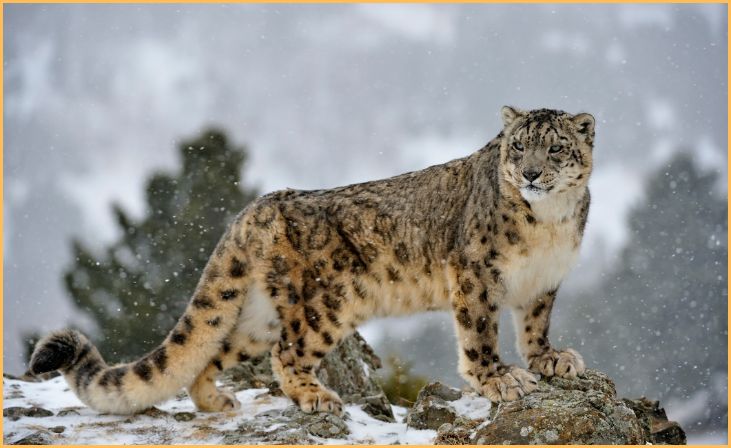
Inhabiting the high mountain ranges of Central and South Asia, the snow leopard is a master of survival in extreme environments. With its thick fur and large paws, this elusive cat navigates steep cliffs and deep snow effortlessly. The snow leopard’s main prey includes blue sheep and Himalayan tahr, showcasing its ability to thrive in harsh, alpine landscapes. Unfortunately, this magnificent cat is endangered due to poaching and habitat loss. Conservation initiatives are crucial to protecting the snow leopard and preserving the delicate balance of mountain ecosystems.
Cheetah (Acinonyx jubatus)
Renowned as the fastest land animal, the cheetah’s slender, aerodynamic build enables it to reach speeds of up to 75 miles per hour in short bursts. Native to sub-Saharan Africa and parts of Iran, cheetahs excel in open grasslands where they can utilize their incredible speed during chases. Their distinctive tear markings and non-retractable claws set them apart from other big cats. Despite their speed, cheetahs face challenges such as habitat loss and human-wildlife conflict, making conservation efforts vital to secure the survival of this remarkable species.
Tiger (Panthera tigris)
The largest of all big cats, the tiger commands respect with its powerful physique and striking markings. Tigers are native to various parts of Asia and are known for their solitary nature. With a preference for dense vegetation and water sources, they are expert swimmers and can be found in mangrove swamps as well as snow-covered forests. Tigers are highly endangered due to poaching for their bones and skins, as well as habitat destruction. Conservation programs are essential to protect these iconic cats and the ecosystems they inhabit.
Cougar (Puma concolor)
Also known as the puma or mountain lion, the cougar is native to the Americas and holds the title of the largest cat with the most extensive range in the Western Hemisphere. Adapted to various habitats, from mountains to swamps, cougars are highly elusive and solitary hunters. Their powerful hind legs enable them to leap great distances, making them adept ambush predators. Despite their adaptability, cougars face threats from habitat fragmentation and human-wildlife conflict. Understanding and coexisting with these majestic cats are critical for their survival in the wild.
Also Read: Indoor Cat Breeds
African Wildcat (Felis silvestris lybica)
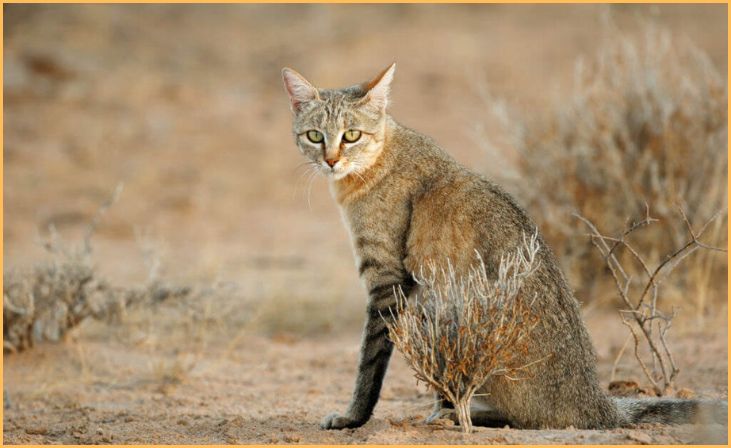
Considered the ancestor of the domestic cat, the African wildcat is a small and elusive feline found throughout Africa and parts of the Middle East. Resembling domestic cats in appearance, these wildcats are skilled hunters, preying on small mammals and birds. They play a crucial role in controlling rodent populations in their ecosystems. Despite their adaptability, African wildcats face challenges such as hybridization with domestic cats and habitat loss. Recognizing their ecological importance and implementing conservation measures are vital to ensuring the continued existence of these lesser-known but essential predators.
Conclusion
The Top 8 Deadliest Cats stand as testament to the remarkable diversity and adaptability of these apex predators. From the elusive snow leopard to the powerful lion, each cat showcases nature’s awe-inspiring design. As we delve into their world, it’s crucial to recognize the vital role they play in maintaining ecological equilibrium. While their deadly capabilities are a testament to survival instincts honed over millennia, it’s our responsibility to ensure their continued existence. Let’s marvel at their magnificence, appreciating the delicate dance between predator and prey that defines the circle of life in the animal kingdom.
FAQs
The title of the deadliest cat goes to the jaguar, known for its powerful bite and remarkable strength, making it a formidable apex predator.
While these cats primarily prey on wild animals, conflicts with humans can arise, especially in areas where their habitats overlap. Understanding and respecting their space is crucial to minimizing such encounters.

